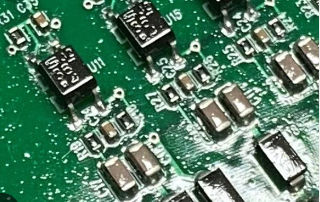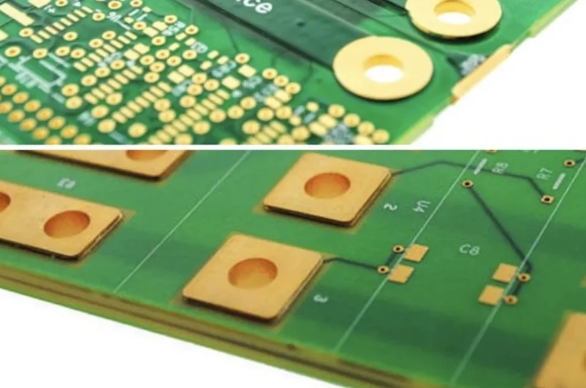Conformal Coating for PCBs: A Comprehensive Guide
Introduction
Printed Circuit Boards (PCBs) are the backbone of modern electronics, found in everything from consumer gadgets to industrial machinery and aerospace systems. However, PCBs are often exposed to harsh environmental conditions such as moisture, dust, chemicals, and temperature fluctuations, which can lead to corrosion, short circuits, and eventual failure. To enhance the durability and reliability of PCBs, manufacturers use conformal coating—a protective polymeric layer applied to the board’s surface.
This article explores conformal coating in detail, covering its types, benefits, application methods, inspection techniques, and industry standards. By the end, readers will have a thorough understanding of how conformal coating improves PCB performance and longevity.
What is Conformal Coating?
Conformal coating is a thin, protective film applied to a PCB to shield it from environmental stressors. The coating “conforms” to the board’s contours, covering components, solder joints, and exposed traces without interfering with functionality. It acts as a barrier against:
- Moisture & Humidity – Prevents electrochemical migration (dendritic growth) and oxidation.
- Dust & Contaminants – Reduces the risk of short circuits caused by debris.
- Chemical Exposure – Protects against corrosive agents like solvents and cleaning fluids.
- Thermal Stress – Provides insulation and reduces thermal expansion effects.
- Mechanical Damage – Adds a layer of abrasion resistance.
Conformal coatings are typically dielectric (non-conductive) to avoid interfering with electrical performance.

Types of Conformal Coatings
Several types of conformal coatings are available, each with distinct properties suited for different applications:
1. Acrylic (AR)
- Pros: Easy to apply, fast drying, good moisture resistance, and reworkable (can be removed with solvents).
- Cons: Limited chemical and abrasion resistance.
- Applications: Consumer electronics, automotive, and general-purpose PCBs.
2. Silicone (SR)
- Pros: Excellent flexibility, high-temperature resistance (up to 200°C), and good moisture protection.
- Cons: Poor abrasion resistance and difficult to remove.
- Applications: High-temperature environments (e.g., automotive, aerospace, LED lighting).
3. Polyurethane (UR)
- Pros: Strong chemical and abrasion resistance, good dielectric properties.
- Cons: Longer curing time, harder to rework.
- Applications: Military, marine, and industrial electronics.
4. Epoxy (ER)
- Pros: Hard, durable coating with excellent moisture and chemical resistance.
- Cons: Brittle, difficult to rework, and prone to cracking under thermal stress.
- Applications: Harsh environments where mechanical strength is critical.
5. Parylene (XY)
- Pros: Ultra-thin, pinhole-free coating with superior chemical and moisture resistance. Applied via vapor deposition.
- Cons: Expensive, requires specialized equipment.
- Applications: Medical implants, aerospace, and high-reliability electronics.

Application Methods
Choosing the right application method depends on production volume, coating type, and precision requirements.
1. Brushing
- Process: Manual application using a brush.
- Pros: Low cost, suitable for small-scale repairs.
- Cons: Inconsistent thickness, labor-intensive.
2. Spraying (Aerosol or Spray Gun)
- Process: Coating is sprayed onto the PCB.
- Pros: Fast, good for medium-scale production.
- Cons: Overspray risk, requires masking.
3. Dipping
- Process: PCB is submerged in a coating bath.
- Pros: Uniform coverage, high throughput.
- Cons: Excess coating may pool, requires drainage.
4. Selective Coating (Robotic Dispensing)
- Process: Automated nozzles apply coating only to specific areas.
- Pros: High precision, no masking needed.
- Cons: Higher equipment cost.
5. Vapor Deposition (Parylene)
- Process: PCBs are placed in a vacuum chamber where Parylene polymerizes as a gas.
- Pros: Ultra-thin, uniform coating.
- Cons: Expensive, limited to specialized applications.
Inspection & Quality Control
Ensuring proper conformal coating application is critical. Common inspection methods include:
1. Visual Inspection
- Checks for bubbles, cracks, uneven coverage, and masking errors.
- Often done under UV light for fluorescent coatings.
2. Thickness Measurement
- Tools like micrometers or eddy current testers ensure uniform thickness (typically 25–75 µm).
3. Dielectric Withstanding Voltage Test
- Verifies insulation properties by applying high voltage and checking for leakage.
4. Adhesion Testing (Tape Test)
- Measures coating bond strength by applying and removing tape.
5. Moisture Resistance Testing (Humidity Chamber)
- Evaluates performance under high humidity (e.g., 85°C/85% RH for 1,000 hours).
Industry Standards & Certifications
Several standards govern conformal coating performance:
- IPC-A-610: Acceptability of Electronic Assemblies.
- IPC-CC-830: Qualification & Performance of Conformal Coatings.
- MIL-I-46058C (Military Standard, now replaced by IPC standards).
- UL 746E: Evaluates flammability and electrical properties.
Compliance ensures reliability in automotive (ISO 16750), aerospace (DO-160), and medical (ISO 13485) applications.
Rework & Removal
Sometimes, coatings must be removed for repairs or upgrades. Common methods include:
- Chemical Stripping: Solvents dissolve acrylic or polyurethane coatings.
- Mechanical Abrasion: Sanding or scraping (risks PCB damage).
- Thermal Baking: Softens some coatings for easier removal.
- Microblasting: Uses fine abrasives for precision stripping.
Conclusion
Conformal coating is a vital step in PCB manufacturing, enhancing reliability in demanding environments. By selecting the right coating type, application method, and inspection process, manufacturers can prevent failures and extend product lifespans.
As electronics continue evolving—especially in IoT, automotive, and medical fields—conformal coating technologies will advance, offering thinner, smarter, and more environmentally friendly solutions. Engineers must stay updated on new materials and automated application techniques to maintain high-quality standards.
By implementing best practices in conformal coating, companies can ensure their PCBs withstand harsh conditions, reducing costly failures and improving customer satisfaction.







